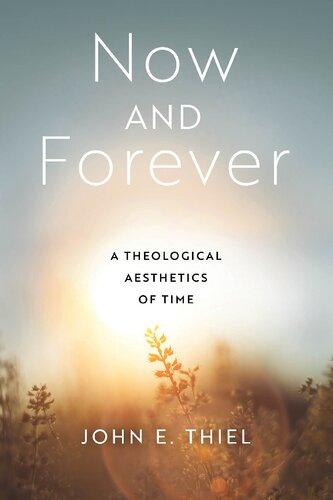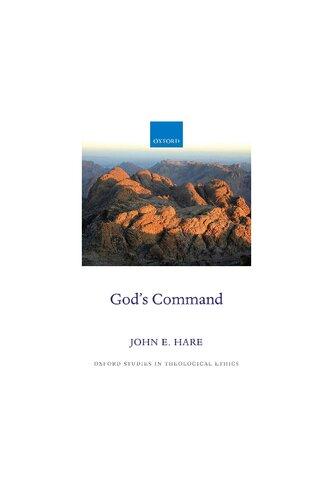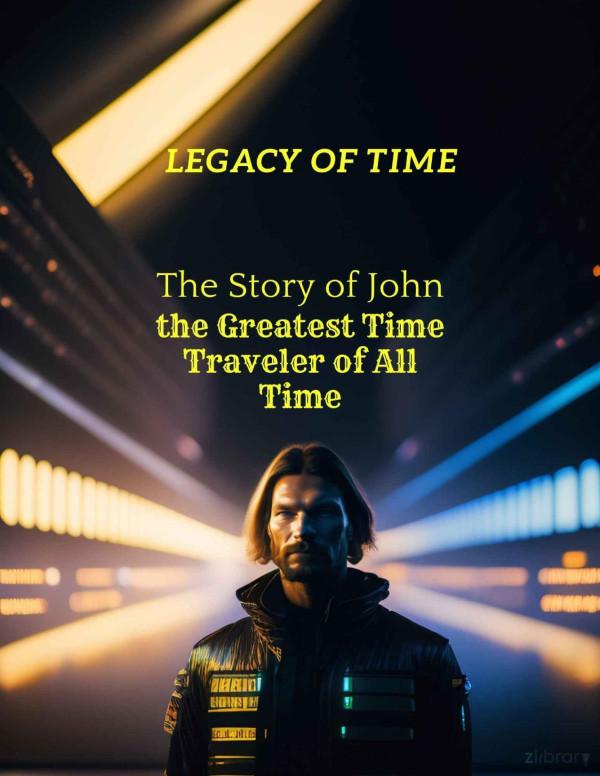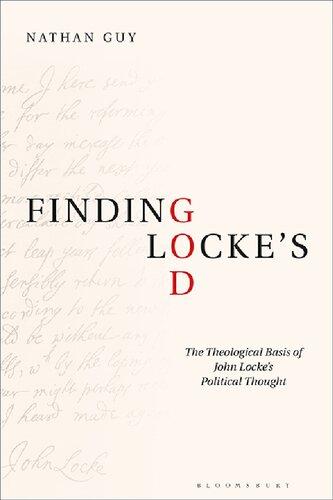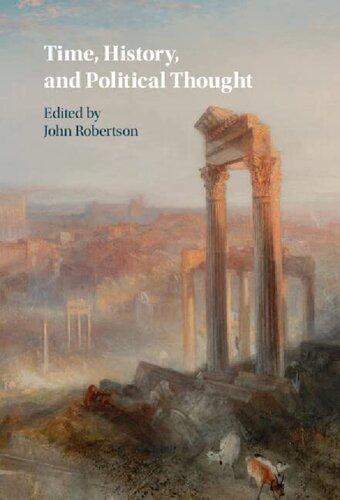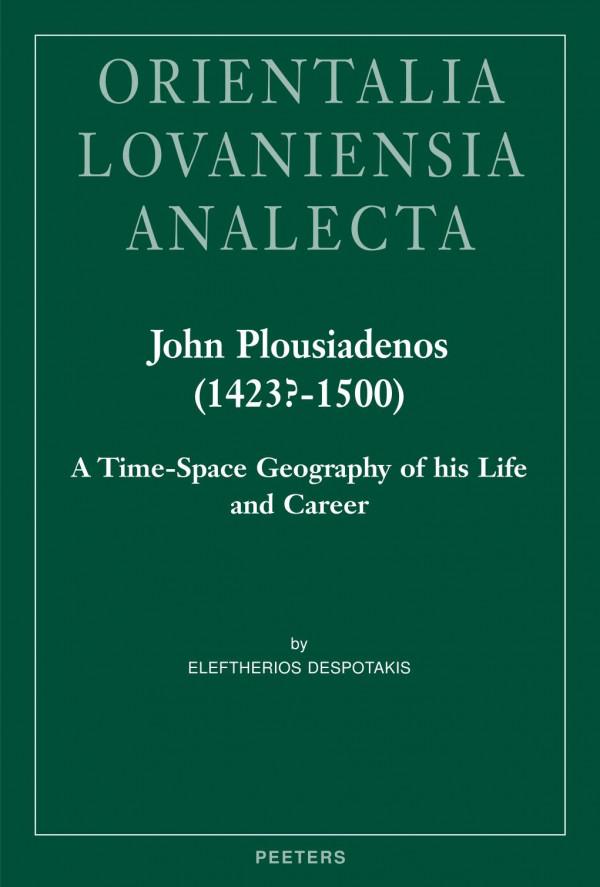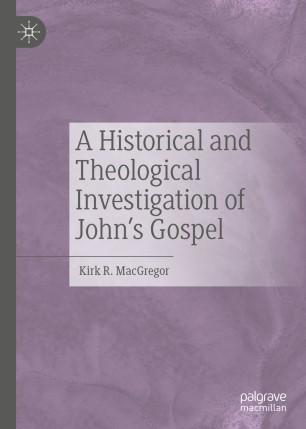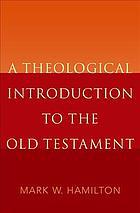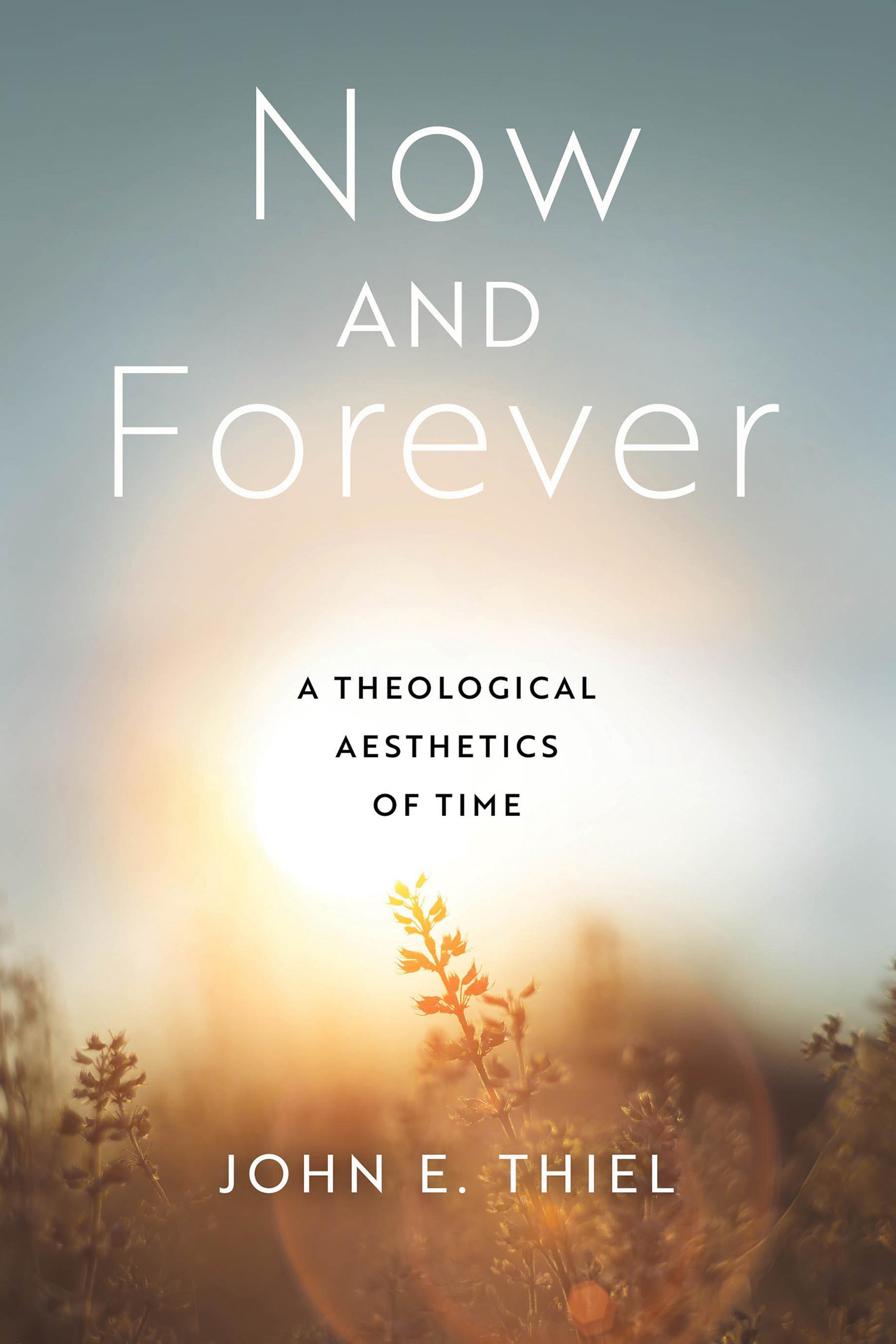ACKNOWLEDGMENTS
Writing the acknowledgments for a book about to appear is always a delightful way to conclude the project. The work is done, and one pauses to appreciate all the intellectual and emotional support, the many acts of kindness, that enabled the writing to reach its end. For this book on grace, the expression of gratitude for the generosity of friends and family is a way of revisiting the very topic on which I wrote.
I began this book nine years ago when I decided that writing on aesthetics would make me happy—or as happy as one can be ever facing the blank page. Half of these chapters, though, were written between May and December 2020 during the pandemic when I was on sabbatical in the fall semester. I am grateful to Fairfield University for granting me this sabbatical leave. In particular, I am grateful to the Faculty Research Committee and Dean Richard Greenwald for recommending the leave and to Provost Christine Siegel for approving it.
Only chapter 5, on the aesthetics of tradition, has appeared in print before. It was published under the same title it bears here, “The Aesthetics of Tradition and the Styles of Theology” in Theological Studies 75 (December 2014): 795–815. It was later reprinted in Beyond Dogmatism and Innocence: Hermeneutics, Critique, and Catholic Theology, edited by A. Godzieba and B. Hinze (Collegeville, MN: Liturgical Press, 2017), 56–83. Thanks to SAGE Publications for permissions and to David Schultenover, S.J., for applying his extraordinary editorial skill to the original manuscript.
I am fortunate to be a member of a local, New York–area research group that has its roots in the Constructive Theology Work Group at Vanderbilt Divinity School. We have met together three times annually for sixteen years to share our work-in-progress. Discussion with my friends
x Acknowledgments
helped to improve four of the chapters that appear here. I am very grateful to Roger Haight, S.J., Elena Procario-Foley, Michele Saracino, Paul Lakeland, Jeannine Hill-Fletcher, and Brad Hinze for their insights and their company. I presented an earlier version of chapter 2 at the Fall 2018 meeting of the New Haven Theological Discussion Group at Yale Divinity School. As is their wont, the members offered valuable criticism that enabled me to refine my reflection on the theological virtues. Kathy Tanner, Kate Sonderegger, Roger Jackson, and Tom Schmidt gave their time and talent to read particular chapters and offer advice that made them better. Julia Lamm offered helpful direction on the arc of my argument from chapter to chapter, which I happily followed. My good friend Paul Lakeland read the entire manuscript all the way through, some chapters multiple times, a favor that he has done for me many times throughout our shared careers and for which I am extraordinarily grateful. In all sorts of ways, conversations I have had through the years with David Kelsey and Cyril O’Regan have shaped my theological work. Their influence is here, in and between the lines. I am grateful to Eli Bortz, former editor-in-chief at the University of Notre Dame Press, for bringing my pages to publication, to Robert Banning for his fine copyediting skill, and to Matthew Dowd, Wendy McMillan, Kathryn Pitts, and the staff of the UNDP for all their good work.
There are those who did not read these pages along the way and who are just as important to the book’s completion as those who did. The topic of this book is time, and Greg Schopen has taught me how time can matter much more than the proximity of space in a lifelong friendship. Even from afar, though, he has provided an inspiring example of scholarly dedication. Susan Rakowitz, Randy Sachs, S.J., Beth Boquet, Alice Fleming, Bill McConville, O.F.M., Joy McDougall, Bob Neville, Ellen Umansky, Wesley Wildman, and Suzanne Wildman have informed my thoughts on grace in this book more than they might imagine or in a way completely beyond their imagination. I trust each will accurately identify his or her imaginative category. I find it hard to imagine a better family than Dorothea, David, Benjamin and Sara, and, indeed, our entire extended family. I am forever grateful to and for you all.
Fairfield, Connecticut March 3, 2022
ESCHATOLOGY, TIME, AND THE CONTINUITY OF GRACE
The title of this book announces my intention to write a theological aesthetics of time. As a modern theological theme, time has largely been embraced by process theologians, who in their attention to the present moment tend to avoid talk of the distant temporal past and the distant temporal future, and by more traditionally minded eschatologists, who are eager to reflect on all the ways a future of fulfilled divine promise is yet being realized in the present moment. In these pages, I will follow the path trodden by the eschatologists, who view time not merely as a natural ambience but as a created condition that in every passing moment heralds, in Jürgen Moltmann’s phrase, the “coming of God.”1 A traditional eschatology’s concern to speak of God’s future has pressing implications for the created time in which the future unfolds—here and now. Time, I will argue, is a dimension of creation that mediates God’s grace, God’s very presence, which brings creaturely existence to resurrected life. In this sacramental quality of time lies its beauty, a beauty whose radiance appears in the gracefulness of events in time that finitely reflects the eternal relations in God’s own Trinitarian life. Clearly, such an argument for the sacramental beauty of time will need to address all the ways that events in time are often deeply tragic occasions of loss and human anguish. Although my eschatology will follow a traditionally minded path in its attention to the ways God’s future is always already latent in the present moment, in what I will call “time now,” it will pursue an untraditional complement to this view in its claim that the continuity of grace mediated
through time requires that resurrected life be imagined as a temporal state, as a “time forever” through which God’s graceful presence is ever availed to redeemed creatures. My previous book Icons of Hope proposed the theological advantages of imagining heavenly life in a way consistent with the Christian doctrine of bodily resurrection, but did so without a developed account of the role of time in such theological speculation about the heavenly imaginary.2 Here, I seek to construct a consistent theology of time, at once a theology of grace, that envisages the beauty of time in its created duration from now to forever. If successful, my project will contribute to the mainline theology of grace that has been developing in the Catholic tradition since the mid-twentieth century, as well as to the genre of theological aesthetics that has flourished through the very same years. Eschatology, albeit a somewhat untraditional one eager to consider the theological implications of time forever, will govern my consideration of the beauty of graced time in the pages to come. Let us begin with some introductory observations that attend to the eschatological template of my study.
Eschatology Thick and Thin
An eschatology in the temporal key of hope is the subject matter of this book. Understood as a theological content, as an interpretation of Christian beliefs about death, judgment, and life after death, eschatology has been addressed in the talk and writings of believers since the early days of the tradition. Eschatology as a focused genre of writing, as a theological subdiscipline of its own, is a more recent arrival in the history of theology. This is so because post-Enlightenment theologians began to imagine theology as a variety of differentiated tasks, each characterized by a specific content and method. Not only eschatology, but all theological subdisciplines, such as systematic theology, biblical theology, and historical theology, had their origins in the nineteenth-century project of theological encyclopedia. The theological encyclopedia was not a compendium of entries that briefly explained topics, issues, or technical terms in order to provide an overview of knowledge. The theological encyclopedia was a work on method, concerned to cultivate expertise through the mastery of particular theological concerns, tasks, and skills. The nineteenth-century
Eschatology, Time, and the Continuity of Grace 3
authors of these works presumed that each theologian could and would garner some measure of accomplishment in all of the theological subdisciplines that the encyclopedia sketched. In the course of the twentieth century, professional specialization increasingly led theologians to concentrate their studies in a particular theological subdiscipline for which they claimed mastery without a professional sense of obligation for the mastery of other fields. By the end of the twentieth century, the Catholic theologian Bernard Lonergan could speak in his own work on method of theological practice transpiring through various “functional specialties,”3 each of which defined a field of expertise in which a theologian trained and in which a theologian might demonstrate accomplished interpretation. Eschatology, like all of the modern theological subdisciplines, emerged in this way as a discrete field of study, and as the one to which our efforts here will be devoted.
Besides the post-Enlightenment development of disciplinary specialization, there has been a shift in the history of ideas that explains why eschatology specifically has taken shape as a theological subdiscipline in the modern period. In the late nineteenth and early twentieth centuries, the New Testament scholars Johannes Weiss (1863–1914) and Albert Schweitzer (1875–1965) stirred a new awareness of the apocalyptic sensibilities that fueled the preaching of Jesus and the faith of the earliest Christians.4 In Weiss’s and Schweitzer’s readings of the Gospels, Jesus was an apocalyptic preacher who expected the imminent end of the present world and who saw his religious message as the harbinger of a new world breaking into time in the coming kingdom of God. Their discovery of what had always lain before the eyes of Christian readers issued from their historical-critical study of the scriptural texts. But their recovery of Christian apocalyptic did much more than fashion a more complete scholarly knowledge of the past. Both scholars recognized that early Christian apocalyptic stood at odds with the views of present-day Christians, many of whom believed that Jesus taught a bourgeois morality that valorized the social status quo. This discrepancy between the apocalyptic worldview of early Christianity and the very unapocalyptic worldview of contemporary liberal Christianity focused theological attention all the more on the distinctive eschatological zeal that animated Jesus and the early church. In the course of the twentieth century, theologians saw the recovery of apocalyptic as a corrective not only to a stilted understanding of Christian
origins but also to a reductive regard for Christian faith—one that failed to account for the eschatological ardor of the first Christians. In response, theologians have ventured broader, constructive interpretations of the apocalyptic that appreciate the eschatological dimensions of belief, doctrine, and practice. The works of theologians such as Hans Urs von Balthasar, Karl Rahner, Joseph Ratzinger, Jürgen Moltmann, Miroslav Volf, and Elizabeth Johnson creatively evince this constructive concern. Their contributions to the recent theological genre of eschatology have addressed such topics as the eschatological meaning of the lives of the saints,5 the symbolic value of eschatological language,6 the theological importance of the Last Judgment,7 the Trinitarian God of the eschatological future,8 forgiveness as eschatological ethics,9 and the feminist valence of the communion of the saints.10 There are, of course, other theologians who write in the field of eschatology and who address a host of other eschatological issues.
Even though the past century has seen the emergence of eschatology as a distinctive theological locus and as a subdiscipline in its own right, theologians often remain wary of taking up its practice. Christian hope may have otherworldly aims, but modern epistemological commitments defined by the empiricism of the scientific method and the Kantian critique of metaphysics often make theologians quite reluctant to engage in speculation about eschatological events that elude the critical reach of reason and even, perhaps, the power of imagination. Although a few theologians engage eschatology in what Cyril O’Regan has called a “pleromatic” style, one that is not at all reticent about speculatively imagining God’s purposes in the “last things,”11 theologians who take up the task of eschatology more typically do so by teasing out the existential value of traditional symbols. This more customary approach—one that we might metaphorically describe as “thin”—assumes an apophatic stance toward the “last things” in themselves and ventures this-worldly interpretations of their meaning. Purveyors of this thin style of interpretation judge what we might by contrast call a “thick” or pleromatic style of eschatological interpretation to venture far too much in its willingness to speculate about the “last things.”
To some degree, the difference between what we might call “thicker” and “thinner” eschatological renditions derives from the difference be-
Eschatology, Time, and the Continuity of Grace 5
tween supernaturalist and naturalist orientations in theological interpretation. These orientations in turn reflect theological assumptions about (1) the capacity of theological reason and imagination to transcend the realm of empirical experience and (2) the productive theological value of such an enterprise even were it possible. In many ways, these various versions of the same divide concern the nature and scope of temporality—its extent, its limits, its workings, and its possibilities—as the proper ambit for theological interpretation, to say nothing of time as the proper ambit of all creation. In the chapters that follow, I will reflect theologically on the nature and scope of time in order to argue for the value of a speculative approach to eschatology that ventures a thicker description of the “last things.” More specifically, I will develop the notion of eschatological time, a time rife with the saving power of God’s grace, as a richer field within which theological interpretation might reflect meaningfully on the eschata. I will argue that eschatological time pervades every dimension of God’s creation, and so this conception of time presumes more continuity than difference between this world and what Christians believe to be the world to come. Additionally, the imaginary I will construct offers a theological aesthetics of time, one that considers time as an eschatological condition for the believer’s apprehension of God and that appreciates the beauty of this most fundamental dimension of God’s creation.
I have already noted that my argument will present time as a medium of God’s grace and that the continuity of God’s grace to all things creaturely must then assume a continuity in the created reality of time—a continuity that traverses distinguishable dimensions of eschatological time: “time now” and “time forever.” Let us proceed by exploring efforts in twentieth-century theology to configure this-worldly eschatological time—“time now”—and then move on to consider how this gracefully pregnant time might be imagined in the coming world of consummate grace for which believers hope—“time forever.”
Time Now
It is interesting to consider how theologies in the past seventy years have imagined worldly time saturated with the divine presence and so, one
might say, with eschatological resonance. Two examples—one Catholic and one Protestant—will illustrate this point.
The Catholic nouvelle théologie that emerged in Europe after the Second World War reacted against neoscholastic theology’s appropriation of the nature-grace distinction by recovering from the ancient Catholic tradition an understanding of the immanence of the eternal in time. The work of the French Jesuit Henri de Lubac (1896–1991) best illustrates this theological direction. De Lubac’s ground-breaking Surnaturel (1946), as well as his later Le mystère du surnaturel (1965), argued that neoscholastic theology’s use of the concept of “pure nature” poorly accomplished its theological goal of preserving both the dignity of human nature and the gratuity of God’s grace. The notion of “pure nature” postulated a created human nature that, at some imagined point, stood before God graceless, as though the natural order and the supernatural order were two different spheres, each with its own integrity, that would intersect narrowly in the providential economy in order to bring an otherwise graceless but redeemable human nature to the redeeming state of grace. Neoscholastic theology imagined that the sacramental mediation of the institutional church would provide that slender and exclusive channel of grace to join the supernatural order “above” to the natural order “below.”
In de Lubac’s judgment, there were several problems with this conceptualization. Even though he was willing to admit that the hypothesis of “pure nature” preserved the transcendent gratuity of grace and so God’s freedom as the giver of grace,12 de Lubac concluded that the hypothesis yet fractured the immanent gratuity of grace. Since, he insisted, created human nature never exists outside the ambit of grace, the hypothesis of “pure nature” requires the postulate of a natural order that does not exist and that has never existed. “Indeed,” de Lubac asserts, “it is extremely hard—as experience has shown—to pursue this idea of ‘pure nature’ and make it anything other than a great ‘X’ for which we have no precise intellectual meaning, and which cannot therefore help our thinking along very much, without our ending up by gradually attributing to it more and more of the qualities and privileges which attach to our present human nature in relation to God.”13 Moreover, what de Lubac pejoratively described as this “nominalist”14 conceptualization ac-
Eschatology, Time, and the Continuity of Grace 7
tually made both the natural and supernatural orders different species of a common genus, thus putting both nature and grace on the same level in spite of their affirmed distinctiveness. Though compartmentalized for the sake of their proper distinction, both the natural and supernatural orders yet became homologous in this imaginary because the goal of the distinction was to preserve both the gratuity of grace and the created dignity of humankind in its capacity freely to accept grace. “Thus,” de Lubac finds, “the supernatural order loses its unique splendor; and . . . , by a logic whose headlong course we cannot halt, often ends by becoming no more than a kind of shadow of that supposed natural order . . . , a ‘supernature’ which reproduces, to what is called a ‘superior’ degree, all the features which characterize nature itself.”15 For de Lubac, nature is always already graced, and the gratuity of grace, to be real, must be gifted to the person as he or she actually stands in graced relation to God if theology is to capture the truth of that relationship.
There was, we should recall, an eschatological dimension to this mid-twentieth century controversy on the relationship between nature and grace. Very much at issue in this debate was the question of whether humankind possessed a natural desire for the Beatific Vision, a theological concern that could be posed as the question “Is humanity created with a predisposition to its eschatological destiny?”16 Post-Tridentine theology through the neoscholastic tradition answered no, a position grounded on the Aristotelian axiom that a nature’s predispositions must be proportionate to their ends. Assuming humanity’s creation in a state of pure nature, one could ascribe a desire for natural happiness to human nature, but only grace could elevate the natural desire for beatitude to a desire for the Beatific Vision. For neo-Thomist theology, this sequence of the priority of the gift of creation, followed by the gift of grace, maintained both the gratuity of grace and the moral capacity and responsibility of the human person after the fall. De Lubac answered the question of whether humanity was created with a predisposition to its eschatological destiny with a resounding yes. He insisted that neither the created dignity of humankind nor the gratuity of grace could be secured by appeal to the limit concept of a pure nature. In de Lubac’s judgment, such a conceptualization was theologically flawed in its hypothetical construction of a human nature that never existed, since human nature
was never not graced. The neo-Thomist fealty to the concept of pure nature resulted in an extrinsicist understanding of grace as a supernatural commodity added to nature. The human desire for the happiness of the Beatific Vision, de Lubac insisted, dwells in the human heart as it is ever graced, the real gratuitousness of grace not requiring that it originally be estranged from nature in some primitive state but only that it be gifted by God to the human nature ever graced.17
The category of time never explicitly entered into the critique that de Lubac made of the neoscholastic theology of his day, nor into the controversy that unfolded in the aftermath of his critique. But the category of time actually provides an interesting way of identifying what each party valued in its adjudication of the relationship between nature and grace. The neoscholastic tradition’s appropriation of the notion of “pure nature” imagined a temporal sequence in which the original creation of the human person was followed by the divine overture of grace. The gap in this sequence distinguished between a time in the order of creation devoid of grace in which human nature was yet good and morally responsible and a later time in which human nature flourished under the dispensation of grace, the gap in time assuring as well the gratuity of grace and God’s gracious freedom. For de Lubac, this imaginary misconceived nature, grace, and, indirectly, time as well. De Lubac denied any temporal sequence in the dispensation of grace. For him, the order of creation is never ungraced, its time so entirely replete with the divine gift that a gap in time between an earlier purely natural and a later graced state would be unthinkable.
The temporal sequence of the pure-nature hypothesis did clearly convey the Council of Trent’s teaching on justification, a theological context for the development of the hypothesis in the sixteenth century and thereafter. The sequence clarified the created capacity of the human person to respond to the call of God’s grace while avoiding the Pelagian reduction of grace to nature. To the degree that the pure-nature hypothesis served the theological discussion of the desire for God, the temporal sequence affirmed that eschatological fulfillment in the Beatific Vision was not owed to humanity by God, as though God would be constrained to supplement the natural desire for happiness with which God had created humanity. Yet, for de Lubac, these advantages came at the
Eschatology, Time, and the Continuity of Grace 9
unacceptable cost of positing a temporal gap between the natural and the supernatural that obscured the gratuitousness of grace present to humanity from its incipience. In order for the imaginary of pure nature to be true, he observes, “it would have to be possible to note in the actual course of every real and personal existence . . . a definite moment when God intervenes either to assign an end which till then had been in doubt, or to change the end previously assigned to me.” Either scenario, he concludes, would be “absurd,” both “supposing a radical extrinsicism which must destroy either the idea of nature or that of finality [grace], or possibly both.”18 In effect, de Lubac concludes, the hypothesis of a time without grace, and so a time without the anticipation of eschatological consummation, disrupts the truth that every temporal moment in the order of creation already stands in the saving ambit of God’s infinite love.
We find a parallel concern for the eschatological “now” in the work of the British scripture scholar C. H. Dodd (1884–1973). Dodd developed his understanding of Christian eschatology over the course of his long career, with his first attention to the topic appearing in a 1923 article entitled “The Eschatological Element in the New Testament and Its Permanent Significance.” Here Dodd disagreed with the well-known thesis of Albert Schweitzer that Jesus expected the imminent appearance of an otherworldly kingdom of God that would break into history as a transformative interruption, an event about which, Schweitzer claimed, Jesus was mistaken, since it never took place. For Dodd, the problem with this reading of the Gospels was that it understood eschatology exclusively as a futurist event about to overwhelm the present moment. As a corrective to Schweitzer’s position, which scholars labeled “consistent eschatology,” Dodd proposed what he called in this early article a “transmuted eschatology,” one that affirmed the eschatological valence of the present historical moment to some degree rather than an eschatology that interpreted the coming kingdom of God as an utter alternative to the historical now.19 Jesus, he insisted, did expect the coming of God’s kingdom as a consummate event in the very near future but also taught that dimensions of this coming kingdom were already real within the present age, and in such a way that the consummate event would be the fulfillment of saving power that already had begun to unfold in history. Even in this early writing, as throughout his later writings, Dodd parsed
the New Testament evidence by distinguishing these two eschatological moments that, he claimed, were intimately related in Jesus’s teaching and yet not reducible to each other: a not-yet, consummate eschatological event that lay on the cusp between the present and the future and the already-present eschatological power of God’s saving immanence in and through the Christ event.
It was in Dodd’s later works, especially his 1935 presidential address to the Oxford Society of Historical Theology, published as an appendix to his book The Apostolic Preaching and Its Developments (1936), that these early views were renamed and developed as “realized eschatology.” In this essay Dodd again is concerned to correct what he judges to be an unbalanced understanding of biblical eschatology. Undoubtedly, he concedes, the “Day of the Lord” expected by the Hebrew prophets is a “supernatural event” in which the will of God, as “absolute right,” will overthrow “the powers of evil, and [bring] judgment upon the sin of men.” As a consequence of this divine in-breaking, the Day of the Lord “will bring to those in whom His will is fulfilled a new life which is both glorious and endless.”20 Yet, even here in the Old Testament, all of these otherworldly traits of the eschaton do not stand in disjunctive contrast to a historical time before these consummate events transpire. While the Day of the Lord “belongs, in the last resort, to the realm of the ‘wholly other,’ it is nevertheless not something alien and unrelated to the recorded course of events.” “For history,” Dodd insists, “depends for its meaning and reality upon that which is other than history. The real, inward, and eternal meaning, striving for expression in the course of history, is completely expressed in the eschaton, which is therefore organically related to history.”21
The New Testament offers this same vision of the organic relation between the imminent eschatological future and the existential eschatological present but with “a profound difference” that intensifies this relation in a unique way. In the New Testament, “the divine event is declared to have happened.”22 For Dodd, of course, what has happened is the life, death, and resurrection of Jesus Christ. Understood as a single divine action, these events form “a particular historical crisis” to which “the characteristics of the Day of the Lord as described in [Old Testament] prophecy and apocalypse are boldly transferred” in the New Tes-
Eschatology, Time, and the Continuity of Grace 11
tament witness.23 The New Testament kerygma claims that “the eschaton has entered history; the hidden rule of God has been revealed; the Age to Come has come.” In Dodd’s judgment, “the Gospel of primitive Christianity is a Gospel of realized eschatology.”24
Dodd considers this eschatology to be “realized” in several respects. The divine event already accomplished has brought fulfillment to time. Even though this fulfillment awaits a future completion, it is present now in history because the Christ event has already taken place. Jesus’s ministry unfolds in miracles that the evangelists narrate as a story of “realized apocalypse.”25 The power of God manifest in these events destroys the insidious power of evil in the world and constitutes God’s judgment upon the world. Finally, Dodd claims, “eternal life, the ‘Life of the Age to Come,’ is now realized in experience. Christ is risen from the dead, the first fruits of them that sleep, and we are raised with Him in newness of life. He who believes has eternal life.”26
These same ideas were developed by Dodd in his book The Parables of the Kingdom (1935). The parables of Jesus themselves, he argues, consistently express an eschatology—an account of the coming kingdom of God—that is “realized.” Although “Jesus employed the traditional symbolism of apocalypse to indicate the ‘other-worldly’ or absolute power of the Kingdom of God, He used parables to enforce and illustrate the idea that the Kingdom of God had come upon men [and women] there and then.” In Jesus’s teaching, “history had become the vehicle of the eternal.”27 In calling attention to this important dimension of Jesus’s eschatological teaching, Dodd not only identifies something unique about New Testament apocalyptic but also makes normative claims about the belief of the church throughout Christian tradition. “The conviction remains central to the Christian faith,” he reminds his readers, “that at a particular point in time and space, the eternal entered decisively into history. . . . To that moment in history our faith always looks back. . . . Above all, in the Sacrament of the Eucharist the Church recapitulates the historic crisis in which Christ came, lived, died, and rose again, and finds in it the ‘efficacious sign’ of eternal life in the Kingdom of God. In its origin and in its governing ideas it may be described as a sacrament of realized eschatology.”28 For Dodd, this means that the meaningful passing of time that we measure as history is neither a secular chronology
devoid of eternal significance nor a “veil of illusion” that obscures the eternal from human sight. Rather, historical time “is instrumental, or more properly sacramental, to the eternal order.”29
Certainly, Dodd’s insightfulness as a scripture scholar accounts for his lasting contribution to understanding the character of New Testament apocalyptic, though his own efforts to secure a creative position in opposition to Schweitzer’s and the philosophical climate of twentiethcentury existentialist philosophy explain to some degree the context in which his insight flourished. Dodd himself admitted that “realized eschatology” was not an “altogether felicitous term” to convey his claim that, in the view of the New Testament writers, eternal life already filled the lives of believers in time. He acknowledged the value of clarifying emendations like Joachim Jeremias’s “sich realisierende Eschatologie” and Georges Florovsky’s “inaugurated eschatology,”30 which tried to capture what Dodd had always offered in his fuller scholarly exposition— that although the gift of eternal life was already really in time, the effects of its gracious power had only begun and would be completely actualized in the eschatological future.31
Time Forever
In the past seventy years, Christian theology has affirmed the immanence of God’s saving love to creation by insisting that time possesses a deep eschatological resonance. Certainly, this theological development is a reaction to the Enlightenment banishment of the supernatural from what it claimed to be the autonomy of the natural world.32 Our examples of de Lubac and Dodd are simply illustrative of what has become theologically axiomatic—that the natural world, and all of its created qualities including time, cannot rightly be divorced from the supernatural, as though the natural and supernatural were separate compartments of reality. Although distinguishable, the natural and supernatural are deeply interwoven existentially, the power of the supernatural so available to the natural order that isolating some time that stands outside the realm of grace is judged to be theologically deficient.33
There are, of course, different Catholic and Protestant ways of locating the graced event that transfigures time. De Lubac, in the spirit of the
Eschatology, Time, and the Continuity of Grace 13
nouvelle théologie that influenced the Second Vatican Council and its heritage, sets the gracing of the natural order in God’s act of creation, particularly the creation of humanity, and is unwilling to see humanity’s fall into sin as the utter loss of that graced state. Dodd, on the other hand, locates the graced event in Jesus’s resurrection from the dead, an act of God that defeats the tragic dimensions of the fall by sacralizing all subsequent time, even to the degree that, in his view, believers already possess resurrected life in existential time. In typically Catholic fashion, de Lubac sees his contribution as a recovery of the ancient tradition of patristic theological reflection, and in typically Protestant fashion, Dodd offers his contribution on graced time as a forgotten truth first expressed by the New Testament writers. However the traditions nuance their views on the eschatological resonance of time, there is now a Christian theological consensus, reflected in the work of de Lubac and Dodd, that worldly time is replete with the power of the life to come. And even though that power has not reached and cannot reach its fulfillment in worldly time, it is the proleptic presence of the eschatological here and now that makes time much more than ordinary.
One might say that this contemporary theological sensibility denies any distinction between “before” and “after” in the temporal order once the event of grace has transpired. In graced time there is no graceless interval. Graced time becomes a continuum in which eschatological fulfillment saturates worldly time even as it yet remains unfulfilled. This denial of the distinction between before and after within graced worldly time extends to any absolute distinction between the natural and the supernatural realms. The sensibility affirms that the graced person and, more generally, graced history possess a supernatural trajectory that makes the popular Christian notion of the “after” life theologically questionable, since heavenly life, the sensibility affirms, already flourishes within earthly life. It is simply a matter of fact that theology has not pressed its investigations of that graceful continuum in a heavenly direction. Theologians have not imagined an eschatological time in heavenly, resurrected life in the same way that they have insisted that existential time is ever filled with grace. The modern reluctance to speculate about the eschata alone would account for this absence. But beyond post-Enlightenment apologetics, there are explicitly theological reasons that account for this hesitancy.
The first reason is that the traditional Christian imaginary has tended to conflate the eternity of God and the metaphysics of heaven, as though heaven and heavenly life were as timeless as the divine nature itself. Thomas Aquinas (1225–74) bespeaks this assumption when he claims that in heavenly life the resurrected body will be conformed to the immutability of the soul transfixed by the glory of the Beatific Vision. The body of the resurrected person, he states, “will be entirely subject to the soul—the divine power will achieve this—not only in regard to its being, but also in regard to action, passion, movements, and bodily qualities.”34 This metaphysics, which envisions heavenly life as a static state, imagines that the saved soul’s unchangeable disposition toward the divine will permeates the condition of the resurrected body and, in the heavenly dimension of the communion of the saints, the unchangeable, and so seemingly timeless, character of heavenly life.35 In some respects, the tradition has imagined that God’s timeless being radiates into every dimension of heavenly life to the point that the notion of a heavenly time would be oxymoronic.36
A second reason that theologians have not imagined an eschatological time in heavenly life can be attributed to reluctance in at least one important strain of the Christian tradition to concretize the hope of resurrected life in concepts or images. Theologians throughout history have been satisfied to abide by the eschatological reserve commended in Paul’s claim that “no eye has seen, nor ear heard, nor the human heart conceived, what God has prepared for those who love him” (1 Cor. 2:9).37 This reserve has been intensified in modernity by the willingness of theologians to respect the Kantian epistemological concern that knowledge be constructed on the basis of possible objects of sensible experience, a criterion that a theology of heavenly life could not possibly meet. Karl Rahner expresses this heavenly apophasis in an essay on the availability of the blessed dead to believers on earth by noting that “we meet the living dead . . . when we open our hearts to the silent calm of God himself, in which they live; not by calling them back to where we are, but by descending into the silent eternity of our own hearts, and through faith in the risen Lord, creating in time the eternity which they have brought forth forever.”38 Rahner’s position perfectly illustrates modern theology’s willingness to value the eschatological resonance of existential
Eschatology, Time, and the Continuity of Grace 15
time and unwillingness to speculate about the temporal resonance of the final eschatological state. Karl Barth expresses the same sort of eschatological reserve in a more dialectical fashion: “Heaven is the boundary which is clearly and distinctly marked off for man [sic]. It exists. But in distinction from earth it exists as invisible creaturely reality. It is invisible and therefore incomprehensible and inaccessible, outside the limits of human capacity. . . . It is not merely God who is incomprehensible; the same can also be said of heaven within the creaturely world.”39 This apophatic sensibility would be opposed in principle to any talk of heavenly time as a function of its opposition to talk about all things otherworldly.
The apophasis of this second reluctance has much to commend it. Its unwillingness to qualify the joys of heaven in any way by reducing them to images drawn from worldly experience reflects an avid hope for the life to come and a refusal to place any constraints on the eschatological “more” that constitutes the object of hope. Yet, in spite of the value of this sensibility and its prevalence especially in the modern theological tradition, the representation of heavenly life has a solid footing in the history of Christian art and poetry. The graphic images of heavenly life in medieval art have done much to edify and inspire the hope of generations of believers to the present day, and Dante’s (ca. 1265–1321) moving account of heavenly life in the Paradiso completes a poem that many consider to be the most accomplished ever written. As untypical as their efforts may be, some of the greatest theologians of the tradition—Augustine (354–430), Aquinas, and Jonathan Edwards (1703–58) among them—have been willing to speculate about the character of heavenly resurrected life, even if none has been willing explicitly to consider the theological value of heavenly time.40 Even though the apophatic stance offers the advantage of safeguarding the expanse of Christian hope and avoiding any possibility of theological reductionism, there is no reason to think that this mainstream approach to matters eschatological need be the only legitimate one. The Christian tradition has developed a host of interpretive strategies to avoid naïve or even vulgar forms of literalism into which any theology might fall, and these same safeguards could be enlisted in the speculative development of a chthonic eschatology. Finally, the true test of theological adequacy is performance.
If theological speculation about eschatological heavenly time can reap fruitful results, then perhaps such speculation may have a place in the pluralistic range of approaches to eschatological reflection in the modern theological tradition.
The first reluctance considered above is more consequential. The assumption that heaven itself is timeless in its metaphysical constitution has seeped into Christian consciousness so thoroughly that the very thought of a heavenly time seems strange and perhaps even bizarre. As the Christian doctrine of God developed in late Roman antiquity, Greek intellectual thought forms proved to be exceptional philosophical venues for expressing the divine transcendence. Were God timeless, as Plato had described the world of ideas, then God’s being escapes the corruption of things in worldly time, experienced by sentient beings as the suffering and death from which the Christian gospel promises redemption. Moreover, the theological category of eternity, understood not only as without beginning or end but also as unchanging timelessness itself, enabled all of God’s qualities—God’s character, if you will—to be described as fully realized in being and so as consummated metaphysically in a state of absolute perfection. In classical Christian belief to the present day, the claim for divine eternity distinguishes the being of God from all that is less and, lesser still, wanting in God’s temporal creation, less because in its metaphysical constitution it is not God, and lesser still because, as Paul taught in Romans 8, all creation, and so all of worldly time, is marred by the sin of humanity.
Even though this difference between God’s eternity and created time has been fundamentally important in the Christian worldview, it seems to have become lost in the Christian imaginary of heavenly life. The conflation of heavenly life and God’s timelessness wrongly configures the difference as one between this world and the next rather than as a difference between eternity and time, God and creatures. The assumption of heavenly timelessness derives as well from the Christian belief that redemption itself is a changeless state. Since the redemption of the blessed dead in heaven cannot be undone, their wills in redemption are unchangeably conformed to the divine will, a state of heavenly being imagined as timeless. But this imaginary confuses the finitely unchangeable with the eternally unchangeable, which alone is timeless
Eschatology, Time, and the Continuity of Grace 17
and perfect. The metaphysical constitution of creatures, for example, is unchangeable—they cannot possess natures other than the ones with which they have been endowed—even though the creatures that possess these natures dwell in time and are subject to change in so many other ways. Thus, instances of finite unchangeability flourish in the ambit of temporality. The Christian imaginary would be truer to its classical roots were it to understand the unchangeable volition of the blessed dead in heaven as a kind of finite unchangeableness rather than as the unchanging timelessness that is properly ascribed to God. The irreversibility of the redeemed state in heaven has often been conflated with God’s unique unchangeability, but it is theologically important that the Christian imaginary not violate the distinction between God and creatures so that God remains God and creatures remain creatures, even eschatologically. And in order for creatures to remain creatures eschatologically, they must continue to be in time.
The importance of a supernatural time for the integrity of created persons was articulated in a 1992 publication of the Vatican’s International Theological Commission (ITC) entitled Some Current Questions in Eschatology. Addressing here what it judged to be a number of deficient theological understandings of resurrection and life after death, the ITC explicitly rejected the notion of “resurrection in death,” the view that believers are resurrected at the moment of death rather than at the end of worldly time in anticipation of the Last Judgment. The text does not identify a theologian who maintains this position, but certainly it is the theology of Gisbert Greshake that is being called to task. In Naherwartung, Auferstehung, Unsterblichkeit: Untersuchungen zur christlichen Eschatologie (1976),41 Greshake argued that the traditional doctrine of bodily resurrection had become an obstacle for modern believers in its mythological expectation that the bodies of all the dead would be miraculously reconstituted by God and joined with their souls at the Last Judgment. More specifically, he claimed, this belief violated the very holistic anthropology that it affirmed as true. The notion of an interim state between personal death and an end-time bodily resurrection implicitly identified the created person with his or her immaterial soul, and thus encouraged a merely spiritualized understanding of the self. Greshake affirmed that resurrection at death defeats the latent Platonism of the
traditional eschatological imaginary by insisting on the unbroken integrity of personal existence in the state of blessedness.
Even before it was questioned by the International Theological Commission, Greshake’s theology of resurrected life had already come under the critical scrutiny of Joseph Ratzinger, who would soon become the prefect of the Congregation for the Doctrine of the Faith and then, years later, Pope Benedict XVI. In his Eschatology: Death and Eternal Life (1977), Ratzinger argued that Greshake’s avowedly holistic anthropology of resurrected life overlooked the need of Christian redemption to embrace all of history just as holistically. The traditional belief in the separation of soul and body at death and the particular judgment of the soul by God deferred bodily resurrection until the universal judgment, when all of history, and not just our individual lives, came to a close. This profound belief, Ratzinger insisted, acknowledges that all of history is invested in each person’s life, just as each person’s responsibility for history dwells in the vast web of historical relations that stands under God’s judgment. “When we die,” Ratzinger maintains,
we step beyond history. In a preliminary fashion, history is concluded—for me. But this does not mean that we lose our relation to history: the network of human relationality belongs to human nature itself. History would be deprived of its seriousness if resurrection occurred at the moment of death. If the resurrection occurs in death then, fundamentally, history is indeed in one sense at an end. Yet the continuing reality of history and thus the temporal character of life after death is of quite basic importance for the Christian concept of God as we find that expressed in christology: in God’s care for time in the midst of time.42
For Ratzinger, Greshake’s theology of resurrected life suffered from the myopia of an existentialist individualism that failed to imagine the historical continuity of redemption, a history whose temporality extends even into the heavenly realm.
The criticism of resurrection in death offered by the International Theological Commission enlarges on Ratzinger’s provocative suggestion that heavenly life is a temporal state. Like Ratzinger, the ITC faults the notion of resurrection in death for dissolving the “community aspect of
Eschatology, Time, and the Continuity of Grace 19
the final resurrection” in a resurrection that “would be purely individual.” Moreover, some theologians who favor this position imagine this resurrection atemporally by supposing that “after death time can in no way exist, and hold that the deaths of people are successive (viewed from the perspective of this world); whereas the resurrection of those people in the life after death, in which there would be no temporal distinctions, is (they think) simultaneous.” But this stance, the ITC insists, “implies recourse to a philosophy of time quite foreign to biblical thought.” Time is the created atmosphere for the materiality of God’s creation, including the matter that our bodies are now and, in Christian belief, the matter that our bodies will be forever. In the judgment of the ITC, the notion of resurrection in death, which conceives of time as a worldly condition transcended in death, “does not seem to take sufficiently into account the truly corporeal nature of the resurrection; for a true body cannot be said to exist devoid of all notion of temporality.” Moreover, even in the interim state between personal death and bodily resurrection, “the souls of the blessed, since they are in communion with the Christ who has been raised in a bodily way, cannot be thought of without any connection with time.”43
Here we find a serious theological effort to reason through the implications of belief in the resurrection of the body. This effort does not presume that one need approach the doctrine in a naïvely literalist fashion, as though whatever one would say of resurrected selves would be grounded directly in our experience of persons now. The doctrine does not and should not offer a meaning so utterly reductionistic. But however much the reality of eschatological redemption transcends words and thought, the doctrine of bodily resurrection means at least that the human person in the fullness of his or her created being—what the tradition expresses in the ancient categories of body and soul—shares in the eternal life of the resurrected Christ. The doctrine’s denial of a merely spiritualized understanding of eternal life and its affirmation of the goodness of the material dimensions of the human person might mean at most that the goodness of the entire material creation shares in eschatological redemption, as Paul envisioned in his talk of a New Creation transfigured by and in the resurrection of Christ (Gal 6:15; 2 Cor 5:17). The International Theological Commission’s modest efforts to defend the temporality of heavenly life are an instance of theological faithfulness to the
